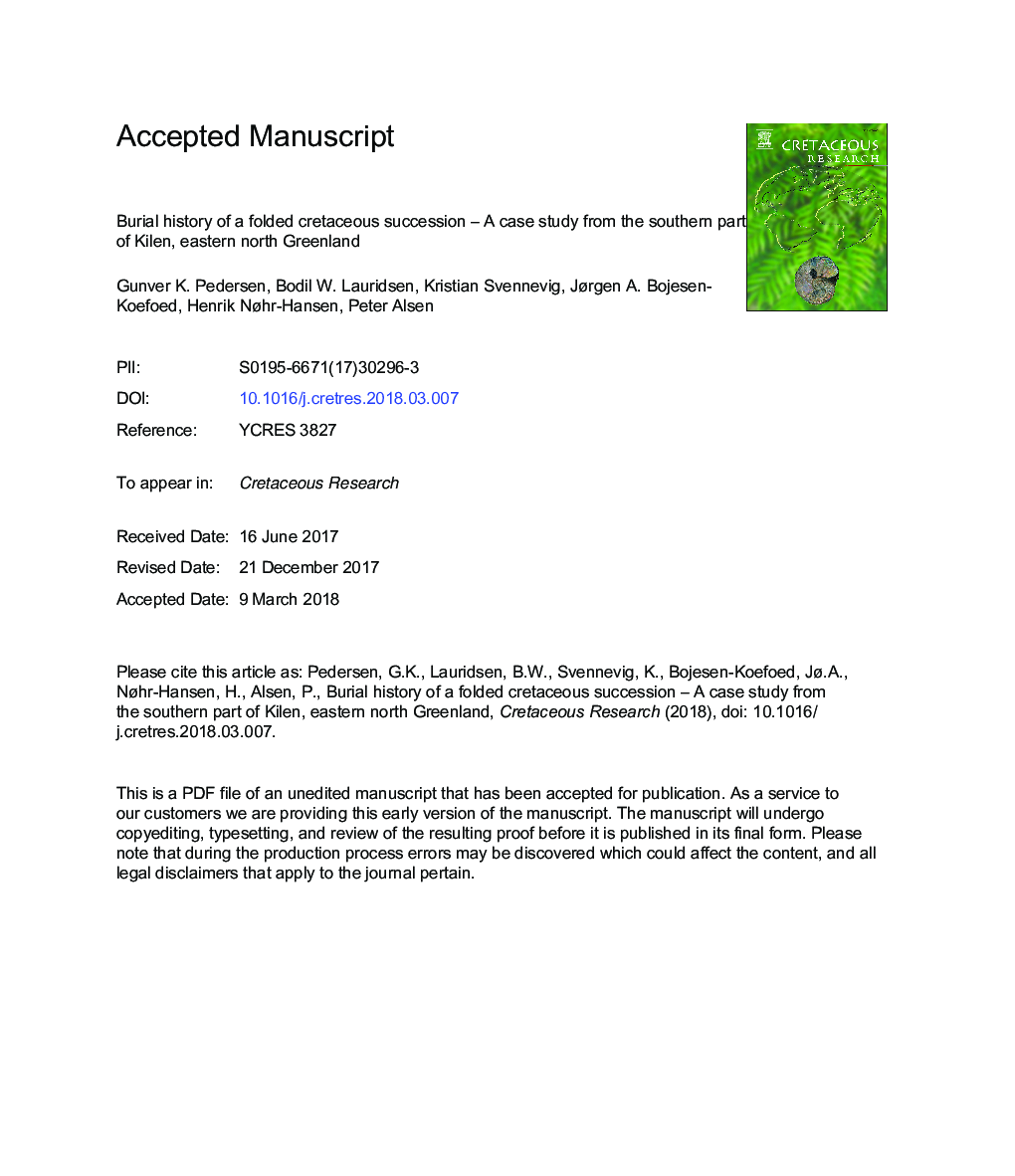| کد مقاله | کد نشریه | سال انتشار | مقاله انگلیسی | نسخه تمام متن |
|---|---|---|---|---|
| 8916223 | 1642034 | 2018 | 40 صفحه PDF | دانلود رایگان |
عنوان انگلیسی مقاله ISI
Burial history of a folded Cretaceous succession - A case study from the southern part of Kilen, eastern North Greenland
دانلود مقاله + سفارش ترجمه
دانلود مقاله ISI انگلیسی
رایگان برای ایرانیان
کلمات کلیدی
موضوعات مرتبط
مهندسی و علوم پایه
علوم زمین و سیارات
فسیل شناسی
پیش نمایش صفحه اول مقاله

چکیده انگلیسی
Kilen is a semi-nunatak in the Flade Isblink icecap in eastern North Greenland with exposures of Mesozoic sedimentary rocks, which are part of the Wandel Sea Basin. Cretaceous marine mudstones and interbedded sandstones of the Galadriel Fjeld and Sølverbæk formations are thrusted and folded in large open folds at Gåseslette in the southeastern part of Kilen. Steeply dipping strata, reflecting parasitic folds and small-scale thrusts, are exposed in low cliffs along a c. 9 km NNW-SSE stretch of the Sølverbæk river. The present study is a case study of the thermal history of these outcrops, called the Sølverbæk section. The burial temperatures are calculated from vitrinite reflectance (Ro) values. Tmax-measurements from Rock-Eval type pyrolysis correlate with the Ro-values. The latter reflects the large-scale folds with higher temperatures in anticlines and lower in synclines. The sedimentary successions are dated on basis of dinoflagellate cysts, inoceramid bivalves and ammonites. The dataset demonstrate a correlation between the Tmax -measurements, maximum burial temperatures, and the preservation of dinoflagellate cysts. The burial temperature at the boundary between the Kangoq Ryg Member and the Sølverbæk Formation varies laterally through a restored section and suggest that the northern part of the section was c. 30° hotter than the southern part prior to folding. Five events are distinguished in the thermal history of the Sølverbæk section: (1) Deposition, (2) rotation of the succession, (3) thermal imprinting, (4) uplift, folding and thrusting, (5) final uplift and erosion up to present day. Following a recent structural model for Kilen events 1-3 are interpreted to be caused by Late Cretaceous rifting where (3) represents maximum burial during rifting. Event 4 is explained by basin inversion of presumed Paleocene-Eocene age.
ناشر
Database: Elsevier - ScienceDirect (ساینس دایرکت)
Journal: Cretaceous Research - Volume 89, September 2018, Pages 22-35
Journal: Cretaceous Research - Volume 89, September 2018, Pages 22-35
نویسندگان
Gunver K. Pedersen, Bodil W. Lauridsen, Kristian Svennevig, Jørgen A. Bojesen-Koefoed, Henrik Nøhr-Hansen, Peter Alsen,